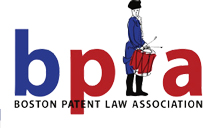BPLA International and Foreign Practice Committee Host an Event on Strategies for Prosecuting Biotech and Life Science Patents in China
May 11, 2017
By: Keith J. Wood
Boston Patent Law Association Spring 2017 Newsletter

View Link
On Tuesday, April 25, 2017, the BPLA’s International and Foreign Practice Committee hosted a presentation by Dr. Luke Zuo, a patent attorney at China NTD in Beijing, China.
Dr. Zuo provided attendees with a fascinating look at the evolving Chinese patent practices, which was particularly timely in view of the recent release of new examination guidelines from China’s State Intellectual Property Office (SIPO). In particular, Dr. Zuo focused his discussion on Chinese patent procedures, novelty and inventive step and other common issues encountered during prosecution in all patent offices. Dr. Zuo also touched on data requirements for different types of inventions, patentability of diagnostics inventions and second and subsequent medical use inventions, and rules for filing divisionals. Of the common issues encountered during prosecution (novelty and inventive step, sufficiency of disclosure, support, clarity, added matter, and unpatentable subject matter), Dr. Zuo indicated that SIPO has recently focused most of its attention during examination on whether an application meets the requirements for possessing an inventive step. Inventive step has also been the focus of most recent litigations in China. In order to satisfy the Chinese standard for inventive step, a claimed invention must possess prominent substantive features and represent notable progress. A problem/solution approach is used to assess inventive step, in a manner that is, generally speaking, similar to that used in Europe. In a first step of the approach, the closest prior art is identified. In a second step, a distinguishing feature of the claimed invention is identified, and the problem actually solved by the invention is determined. In a third step, the Chinese examiner considers whether the problem actually solved would have been obvious, starting from the closest prior art identified in the first step. In assessing obviousness, the examiner must consider the relevant technical motivation as well as secondary considerations.
As part of the secondary consideration assessment, an applicant may submit during prosecution a declaration or experimental report in support of unexpected technical effects.
In the problem/solution approach in China, experimental data are indispensable to demonstrate inventive step. It is the applicant’s burden to show a technical contribution. In order to rebut a finding of obviousness, an applicant can attempt to re-determine the technical problem that is solved by the invention. Any technical effect can be used to re-determine the technical problem, as long as the technical effect can be recognized from the disclosure of the patent application.
In the recent revised guidelines for examination, released by SIPO on April 1, 2017, there are provisions governing the submission of post-filing experimental data.
Previously, in the provisions regarding sufficient disclosure of chemical inventions, sufficiency was judged based on the disclosure of the application only, and post-filing data was not permitted to be considered. However, under the new guidelines, supplemental data submitted post-filing can be considered, but the technical effect must be one given in the disclosure of the application.
Under the new guidelines, the technical effects shown by the post-filing data must be technical effects that are “obtainable” from the disclosure in the application. Previous decisions of the Chinese Patent Reexamination Board (PRB) have held that technical effects must be those that are “described and verified” in the disclosure. A 2005 decision of the Supreme Court held that the technical effects must be those that are “explicitly described” in the disclosure.
Therefore, current speculation centers on what technical effects will be considered to be “obtainable” from the disclosure, under the new SIPO guidelines, and whether the standard will differ from the previous standards in Chinese patent law. Although there is no detail in the guidelines themselves as to what will be considered “obtainable,” Dr. Zuo provided suggested examples of what experimental data may be considered to meet the new standard.
In terms of formal requirements for the submission of post-filing data, Dr. Zuo indicated that experimental reports, declarations, and publications may be submitted during prosecution. However, during litigations and invalidation proceedings, there are high formal requirements, often including notarization and legalization. Experts may be required to be independent third-parties.
On the patentability of medical diagnostics and therapeutic methods in China, Dr. Zuo indicated that methods of diagnosis and treatment of diseases are not patentable. Individuals of animal or plant species are not patentable. However, methods of producing individuals of animal or plant species are patentable. There is no definition in Chinese law as to what is a “diagnostic method.” However, the new examination guidelines, released on April 1, 2017, define such methods as being processes of identifying, studying and determining the cause or focus of diseases on living human or animal bodies. The examination criteria include that the method is 1) practiced on a living human or animal, and 2) has an “immediate purpose” of obtaining the diagnosis.
Based on the Chinese standard, in vitro methods of detection are also unpatentable. However, in vitro methods are patentable if their immediate purpose is to obtain information as an “intermediate result.” An intermediate result is considered to be information based on which a diagnosis cannot be reached immediately.
Therefore, in order successfully to cover an invention related to diagnostic and in vitro detection, Dr. Zuo described approaches based on the following: Swiss-type use claims; product claims; arguments based on general methods; arguments based on a direct purpose and an intermediate result; and a disclaimer of a diagnostic purpose.
Although new dosage regimens are not patentable under current Chinese practice, Dr. Zuo also provided an interesting discussion of potential strategies for obtaining effective protection for such subject matter. In addition, Dr. Zuo discussed Chinese practice relating to divisional applications. In China, first-generation divisionals can be filed during the pendency of a first application. However, second-generation divisionals are not permitted unless a lack of unity rejection is raised in the earlier divisional. There is, therefore, a limited ability to file divisionals later in prosecution. Nevertheless, Dr. Zuo discussed potential procedural strategies to permit the introduction of new claimed subject matter later in prosecution.
In response to questions, Dr. Zuo also noted that reexamination decisions and judicial review are much faster than commonly expected by U.S. practitioners, and should, therefore, be considered in some circumstances.
The BPLA attendees, and the BPLA International and Foreign Practice Committee, are very grateful for Dr. Zuo’s presentation and kind sharing of his expertise with the Boston patent law community.




